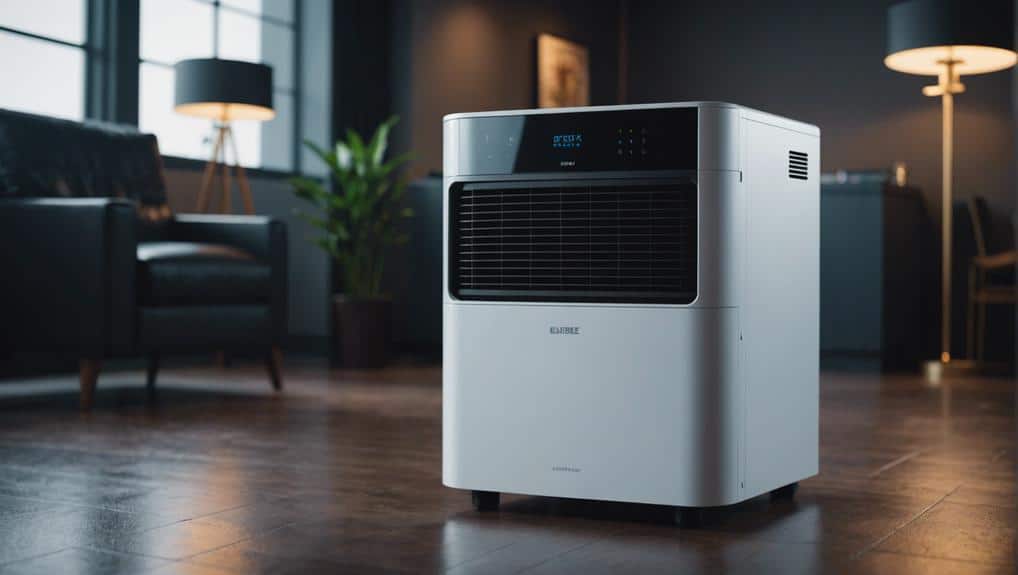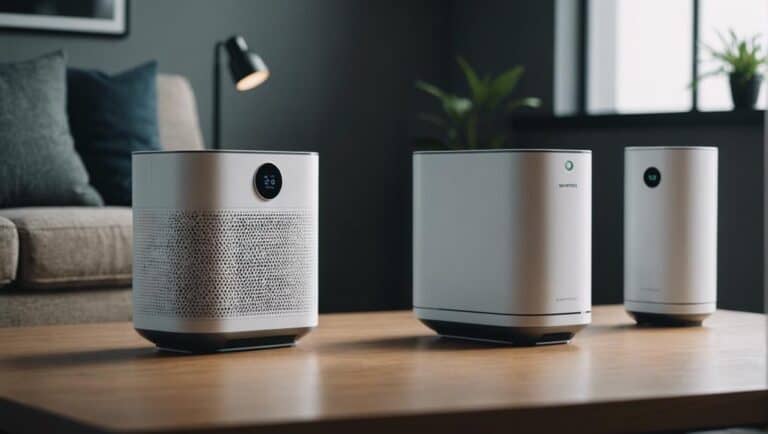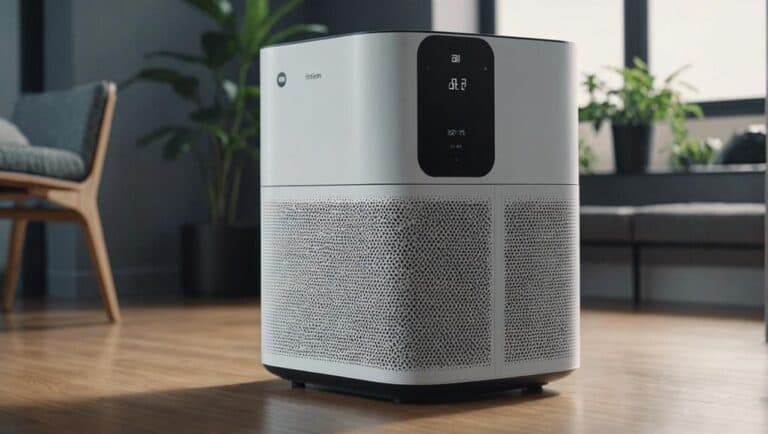Key Features of a Commercial Air Purifier
When considering a commercial air purifier, we must examine the essential elements that make it effective in enhancing indoor air quality.
These key features go beyond mere filtration; they encompass a holistic approach to creating a healthier environment. By understanding how these components work together, we can better appreciate the intricate design and functionality of modern air purifiers.
Advanced Filtration Technologies
Our commercial air purifiers utilize advanced filtration technologies to guarantee the highest level of indoor air quality. The incorporation of HEPA filters guarantees the capture of particles as small as 0.3 microns, effectively removing dust, allergens, and other airborne contaminants. Additionally, activated carbon filters play a crucial role in eliminating odors and chemical fumes, creating a more pleasant and healthier indoor environment for all occupants.
Moreover, the integration of UV-C technology and Ionic technology further enhances the purification process by targeting and neutralizing harmful microorganisms present in the air. This all-encompassing approach to filtration ensures the thorough removal of a wide range of pollutants, promoting superior indoor air quality.
By synergistically combining HEPA, activated carbon, UV-C, and Ionic technologies, our commercial air purifiers deliver exceptional performance in purifying the air and creating a more comfortable and healthy setting for everyone.
Efficient Air Cleaning Process
Utilizing a multi-stage filtration system, commercial air purifiers efficiently clean indoor air by capturing and neutralizing a wide range of pollutants. This process involves the strategic use of various filtration technologies to guarantee the highest level of air purification.
The key elements of this efficient air cleaning process include:
- HEPA Filters: These filters are essential in trapping tiny particles as small as 0.3 microns, such as dust, pollen, and pet dander, making them a cornerstone in improving indoor air quality.
- Activated Carbon Filters: By effectively eliminating odors and chemical fumes, these filters play an important role in creating a fresher and healthier environment in commercial spaces.
- UV-C and Ionic Technologies: The incorporation of these technologies in air purification systems enhances the process by killing or inactivating harmful microorganisms, ensuring a thorough purification process.
Monitoring Air Purifier Efficiency
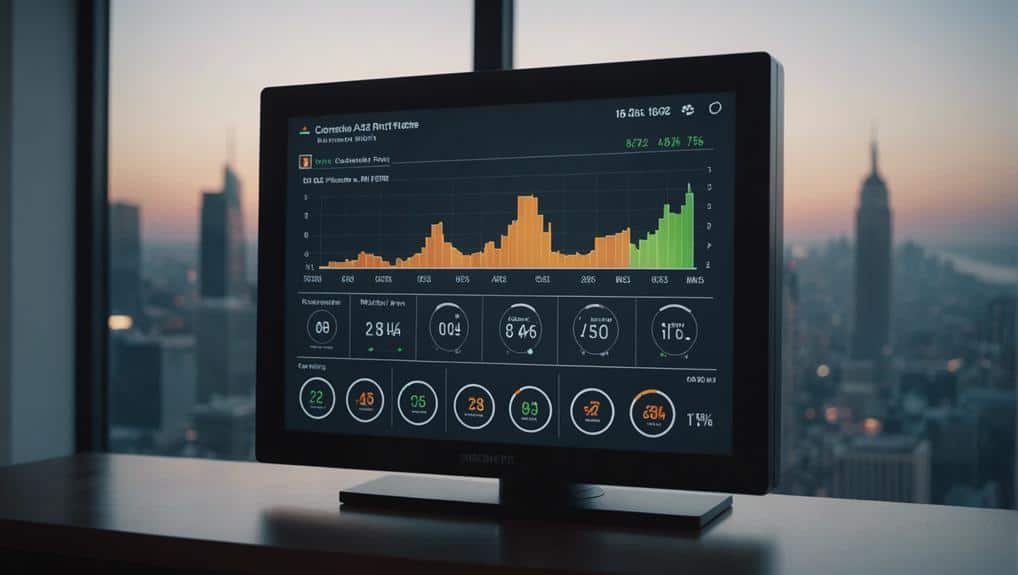
When evaluating air purifier efficiency, we depend on key features like air quality sensors and performance data display to gauge effectiveness. These tools provide real-time insights into air quality and the purifier’s performance, helping us make informed decisions about air purification needs.
Air Quality Sensors
Air quality sensors integrated into commercial air purifiers play a crucial role in monitoring and maintaining ideal indoor air quality levels. These sensors offer real-time monitoring of particulate matter, including PM2.5, VOCs, and CO2 concentrations. By providing data on air pollution levels, the sensors guarantee efficient purification processes.
Here’s how air quality sensors benefit commercial settings:
- Real-time Monitoring: Allows immediate adjustments for effective air purification.
- Data on Air Pollution Levels: Ensures awareness of indoor air quality conditions.
- Maintaining High Air Quality: Helps in achieving and sustaining high air quality standards for a healthier environment.
Performance Data Display
We regularly evaluate the performance data display on commercial air purifiers to gauge their efficiency in maintaining excellent indoor air quality. The Clean Air Delivery Rate (CADR) measurements are vital for evaluating how effectively the air purifier can remove particles like smoke and meet HEPA filtration standards.
CADR ratings specify the volume of clean air delivered per hour, enabling easy comparison of performance. Manufacturers conduct tests to provide valuable insights into the purifier’s air purification effectiveness. Filtration Group’s Purafil business enhances monitoring capabilities by assessing the efficiency of PuraShield products in removing aerosolized viruses.
Monitoring CADR is essential for those who value control over their indoor air quality, as the performance data display directly impacts the purification process.
Clean Air Delivery Rate (CADR)
When considering a commercial air purifier, understanding the importance of CADR measurements and comparing CADR ratings is essential for choosing an efficient system. Higher CADR ratings signify faster pollutant removal, making it easier to maintain clean indoor air quality in large spaces.
Selecting a purifier with specific CADR values for smoke, dust, or pollen guarantees targeted pollutant removal tailored to the environment’s needs.
CADR Measurement Importance
Understanding the significance of CADR measurement is essential when evaluating the efficiency of commercial air purifiers. When considering an air purifier, CADR plays an important role in determining its performance. Here are key points to remember:
- CADR measures the volume of clean air delivered by the air purifier, indicating its efficiency in removing airborne pollutants.
- Higher CADR ratings signify a more effective purification process, ensuring quicker removal of smoke, dust, and pollen.
- Selecting an air purifier with a suitable CADR based on room size and air quality needs is crucial for maintaining a healthy indoor environment.
CADR Rating Comparison
Comparing CADR ratings between different air purifiers provides valuable insights into their efficiency in delivering clean air. Higher CADR ratings indicate a faster purification process, specifically for smoke, pollen, and dust particles. This comparison helps in selecting the right air purifier based on room size and air quality requirements.
A higher CADR rating means the air purifier can clean more air in a shorter time, promoting a healthier environment. When choosing an air purifier, consider the CADR ratings for smoke particles, pollen particles, and dust particles to guarantee top performance. Understanding CADR is essential for making an informed decision when selecting the right purifier to meet your specific air purification needs.
Air Changes per Hour (ACH)
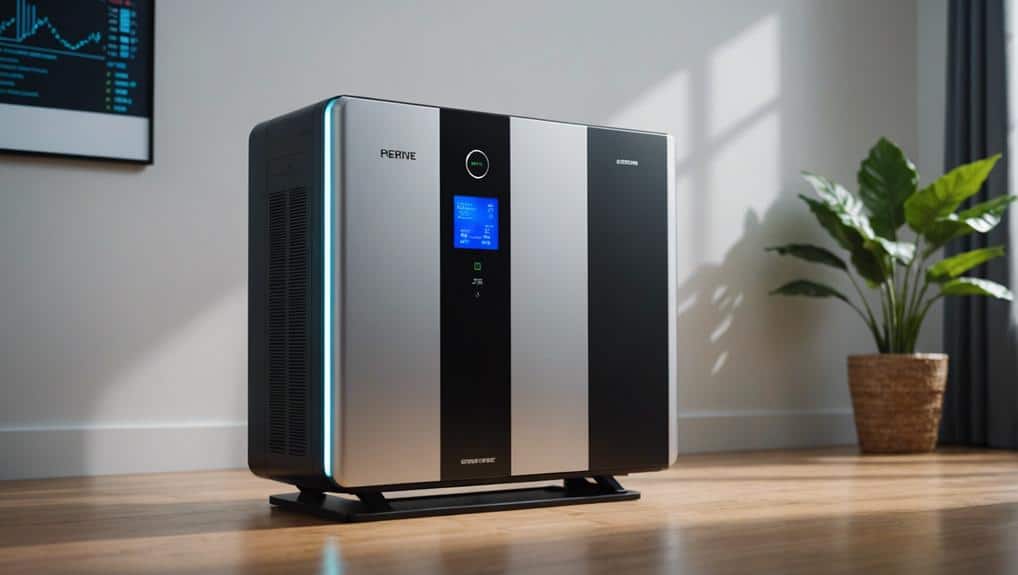
When evaluating commercial air purifiers, the Air Changes per Hour (ACH) metric serves as a key indicator of air quality maintenance. A higher ACH value translates to more frequent air turnover and improved air quality in commercial settings.
Here are essential points about ACH to keep in mind when selecting a commercial air purifier:
- Determining Air Quality Goals: Understanding the desired indoor air quality goals helps in establishing the best ACH required for a space.
- Considering Occupancy Levels: The number of occupants in a room impacts the ACH needed to maintain clean air by accounting for exhaled pollutants and CO2 levels.
- Identifying Pollutant Sources: Recognizing the sources of contaminants aids in calculating the necessary ACH to effectively remove pollutants and maintain a healthy indoor environment.
Factors for Optimal Performance
To guarantee peak efficiency in commercial settings, prioritizing factors that contribute to peak performance is essential. When selecting a commercial air purifier, consider its CADR rating as it indicates the volume of clean air delivered per hour, important for top performance.
Additionally, pay attention to the ACH capability to make sure efficient air purification in larger commercial spaces. Proper sizing of the air purifier based on room volume and specific usage is vital for achieving peak performance.
Look for models with high CFM output to effectively clean the air in spacious commercial environments. Moreover, monitoring and maintaining the air purifier according to the manufacturer’s guidelines is key to sustaining its peak performance over time.
Ensuring Healthy Indoor Air Quality
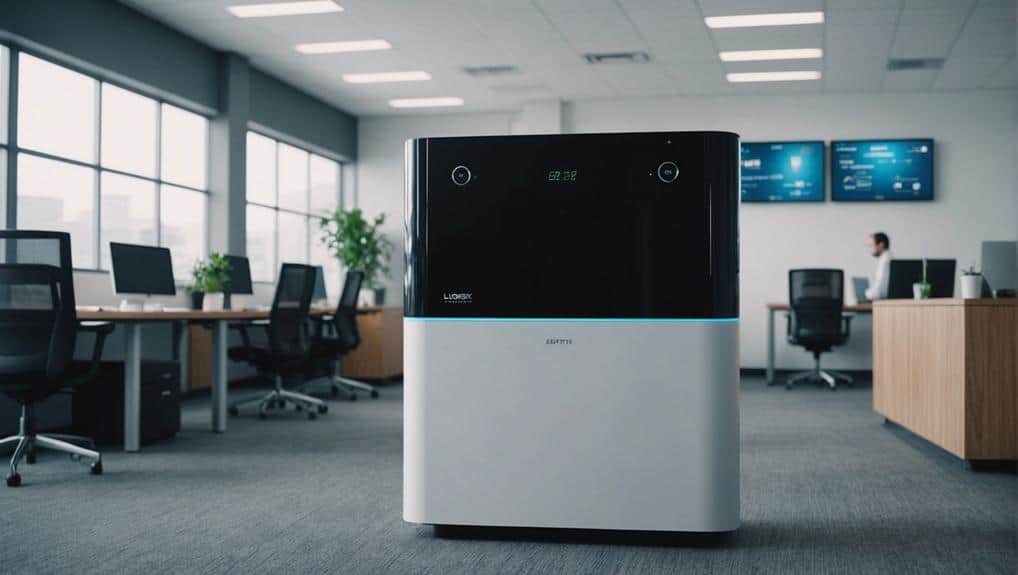
Maintaining healthy indoor air quality in commercial spaces is essential for ensuring the well-being and comfort of occupants. When it comes to achieving this, commercial air purifiers equipped with advanced filtration technologies play an important role. Here are key considerations to promote healthy indoor air quality in commercial settings:
- HEPA Filtration Technology: Commercial air purifiers with HEPA filters can effectively capture particles as small as 0.3 microns, including dust, allergens, and bacteria, thereby enhancing overall air quality.
- Activated Carbon Filters: These filters are instrumental in eliminating odors and chemical fumes, contributing to a fresher and healthier indoor environment for those within the commercial space.
- UV-C and Ionic Technologies: Integration of UV-C and Ionic technologies in commercial air purifiers aids in neutralizing and eliminating microorganisms present in the air, further fostering a cleaner and safer indoor environment.
Conclusion
To sum up, commercial air purifiers offer advanced filtration technologies and efficient air cleaning processes to maintain clean and healthy indoor air quality.
Monitoring features like CADR and ACH help guarantee top performance, promoting a productive work environment.
By investing in a commercial air purifier with key features, businesses can enhance the well-being of occupants and create a healthier indoor environment.
